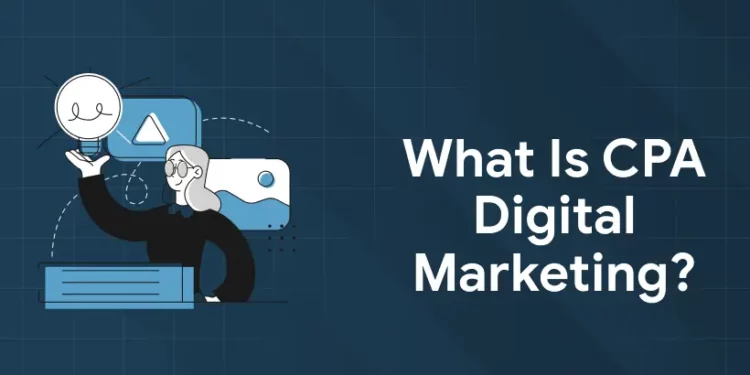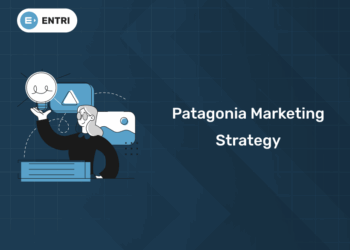Table of Contents
A company that sells goods online can reach a very large audience, but it’s not always simple to identify and convert the correct leads. On the other hand, companies can grow their affiliate marketing efforts and convert a large audience by using CPA (cost-per-acquisition) marketing. For this reason, understanding CPA in digital marketing and its importance to modern firms is crucial.
What Is CPA in Digital Marketing?
The CPA (cost-per-acquisition) type of digital marketing is based on an advertising model that includes a publisher (affiliate), a company/business (advertiser), and a CPA network. This CPA network serves as a platform that connects companies looking to have their products advertised with affiliates eager to make commissions from product promotion.
The CPA network is usually used by advertisers to find the best affiliates to promote their goods through. This sponsor may be a publisher or influencer with a following that is well-established and capable of producing quality, timely material.
This marketing technique would not be possible without the CPA network, which makes it possible to match advertisers and affiliates. In this manner, the influencers get paid a commission for endorsing things that align with their preferences. Conversely, businesses have access to a larger consumer base than they can reach.
Learn Digital Marketing Fundamentals! Get Free Demo Here!
Factors Affecting CPA
1: What is the primary goal of SEO (Search Engine Optimization)?
Target Audience
A significant determinant of CPA is the intended audience. Gaining insight into the characteristics, passions, and actions of your target market enables you to efficiently customise your advertising campaigns. For instance, digital advertising channels could work better than traditional ones if the people in your target audience are tech-savvy.
Ad Placement and Timing
Your advertising’ placement and timing can have an impact on their CPA. Maximising exposure and engagement may be achieved by selecting the appropriate platforms and channels to reach your target audience and by figuring out the best times to distribute ads. For example, higher results can be achieved by placing your adverts during hours when your target demographic is on social media.
Landing Page Optimization
Improving CPA requires optimising your landing pages. The user experience can be improved and the chance of conversions increased with a landing page that is well-designed, easy to use, and consistent with the message of the advertisement. Positive user journey components include things like mobile responsiveness, compelling information, and obvious call-to-action buttons.
Ad Quality and Relevance
The CPA is largely determined by the relevancy and quality of your adverts. Enhancing conversion rates and reducing acquisition costs can be achieved by crafting persuasive ad copy, utilising attention-grabbing imagery, and tailoring your messaging to your target market.
Competition and Industry Landscape
CPA may be impacted by the degree of competition in your sector. In highly competitive industries, budget allocation and bidding strategies may need to be more deliberate in order to obtain desired outcomes. In a competitive market, maximising CPA can be achieved by examining rival tactics, determining USPs, and differentiating your products.
Become an AI-powered Digital Marketing Expert
Master AI-Driven Digital Marketing: Learn Core Skills and Tools to Lead the Industry!
Explore CourseHow To Calculate CPA
To calculate Cost per Acquisition, sum up all of the direct costs associated with acquiring a new customer, including advertising, sales, marketing software, and even trade show participation. Next, divide this amount by the total number of purchases. This covers the cost of advertising as well as related expenses like platform fees, creative development, and PPC management fees charged by the agency. straightforward but effective.
Next, figure out how many acquisitions the campaign was able to make in total. This can range from filling out a form to closing a deal, based on the specified conversion objectives. Just divide the overall campaign cost by the total number of acquisitions to perform a CPA calculation.
CPA Formula
CPA = Total Cost of Conversions / Number of Conversions
For example, if you spent $2,000 on advertising and got 200 conversions, the computation would be like this:
CPA = $2,000 / 200 conversions = $10
Thus, the cost of each conversion is $10.
The average cost-per-acquisition (CPA) for search and display advertising in a range of industries is as follows:
CPA for Search Ads on Average: $2.69
CPA for Display Ads on Average: $0.63
It’s important to remember that typical CPAs might vary greatly by industry. Therefore, using the average CPA for web advertising as a whole as a benchmark isn’t necessarily suitable. Rather, concentrate on improving your unique CPA.
Learn Digital Marketing Fundamentals! Get Free Demo Here!
Strategies to Optimise CPA
Adjust Your Advertisement Quality Score
Increasing your ad quality score affects your ad’s rank, conversion rate, and CPC in addition to lowering your CPA. Your quality score is influenced by elements such as landing page quality, keyword relevancy, ad content quality, and expected click-through rate. Ads that are viewed as highly relevant by users have the potential to obtain higher ad positions and lower cost per click.
Prioritising the following areas will help you maximise your quality score:
- Boosting the CTR (click-through rate)
- Improving Landing Page Content.
- Improving Alignment of Keywords in Ad Copy
- Appropriate Organisation of Ad Groups
Re-Evaluate Your Keyword Selection
You can save expenses and avoid performance lapses by optimising your keywords.
Examine the following elements:
- Targeted Keywords
- Relevance of Ad Copy
- Alignment of Landing Pages
- Persistent Campaign Efficiency
Give your chosen keywords extra thought; make sure they include terms that people could use to find you. Making use of pertinent keywords guarantees that the correct people see your adverts. If some keywords aren’t converting, consider halting them to save money.
Polish Your Creative Elements
Your ad creatives, which include ad language, keywords, and images, must effectively reach your intended audience. Make improvements and adjustments in areas such as:
- Orienting the Primary Image to Your Website
- Using Particular Numbers in Advertising Copy
- Using Keywords in Ad Copy and Headlines
Furthermore, running A/B tests on your creatives can assist in improving the precision of your targeting and identifying the best tactics for your campaigns.
Enhance Your Landing Pages
Users land on landing pages after clicking on your advertisements. Their optimisation and quality have a big impact on your CPA. Enhancing them on a constant basis can result in improved CPA performance. Focus on the following:
- Optimisation of Responsive Design
- Increasing Page Loading Speed
- A/B Testing Designs for Landing Pages
- Examining the Calls to Action (CTAs)
Analysing user behaviour on your landing pages and running A/B tests can help you better understand and target your audience, just like ad creatives do.
Implement Micro Conversions
Micro conversions are the steps customers perform prior to reaching the final conversion point, whereas ultimate conversions are your main objective.
If your primary conversion objective is “requesting a brochure,” for example, several micro conversions could be:
- Getting to the Request Brochure Page
- Analysing the Duration of Time on the Page
- Monitoring Scrolling Behaviour
- Tracking Clicks on Particular Buttons
Micro conversions are markers that help you evaluate the efficacy of your advertisements and make machine learning adjustments to them. They influence your ad strategy by offering insights about user behaviour, particularly for goods or services that require longer periods of thought.
Benefits of CPA
The most evident of CPA’s many advantages in digital marketing is its guarantee of a larger audience for advertisers and a higher return on ad spend (ROAS). Among the other notable advantages are:
Integrated Advertising
Companies can reach a wider audience and increase product recognition by collaborating with publications. This is a result of the audiences that trust content providers and influencers. Thus, advertising your goods on their website helps to increase brand recognition and reputation.
Reduced Risk
In essence, CPA marketing is a low-risk kind of affiliate marketing. Only after making a conversion are you obligated to pay. This guarantees that every recommendation you get has a positive impact. Concurrently, there is a significant decrease in the likelihood of an affiliate deceiving the system to artificially increase website traffic or hits.
Increased ROI
Businesses only have to pay a commission when a sale is made with CPA marketing, which means that ROI is higher. The commission may be charged at a fixed rate or as a portion of the sale price. This model’s affordability is greatly increased.
Simple to use
Putting together a CPA marketing campaign is not that difficult. It’s easy to select a CPA network and an affordable upfront offer that meets your needs. As an alternative, you can designate an affiliate manager to handle affiliate contract negotiations and collect commissions that are deducted automatically by the selected payment processor.
Conclusion:
CPA marketing is a low-cost, high-ROI form of affiliate marketing that enables businesses to reach specific audiences by collaborating with publishers and influencers to generate revenue online.
All you have to do to get going is sign up for a CPA network and begin collaborating with an affiliate manager who can put you in touch with suitable publishers. To maximise conversions and return on investment from CPA marketing, choosing the appropriate CPA network is essential.
Entri App : Digital Marketing Course
The information and abilities provided by the Entri Elevate Digital Marketing Course are essential for success in the digital age. People who are interested in jobs in performance marketing but are new to digital marketing are the target audience for this course. You will discover new digital marketing channels, develop successful campaigns, and pick up a variety of tools and strategies for drawing in and interacting with consumers. These courses also give you the skills you need to succeed as digital marketer and are flexible and reasonably priced.
Learn Digital Marketing Fundamentals! Get Free Demo Here!
Frequently Asked Questions
What does CPA stand for in digital marketing?
CPA in marketing refers to the cost per acquisition or action and is a sort of conversion rate marketing. The amount a business will pay for an advertisement that generates a sale is referred to as cost per acquisition.
Is there profit in CPA marketing?
If you can get quality traffic to your promos and turn it into leads or purchases, CPA marketing may be a very profitable way to make money. Additionally, because you only pay for the actions that your audience takes, it provides a low-risk opportunity to test out various marketing strategies.
Is CPA marketing difficult?
The biggest obstacle in CPA affiliate marketing is producing high-quality traffic. Continue being consistent and investigate different traffic sources including PPC, SEO, and social media marketing to get beyond this obstacle. Continue to learn, try new things, and hone your strategy until you find what your target audience responds to the best.
What is CPA marketing for beginners?
CPA marketing, or cost per action marketing, is a sort of affiliate marketing that allows businesses of all sizes to scale their marketing efforts and reach a larger audience. This entails collaborating with a publication, blogger, or influencer who will market your goods in return for a commission.










